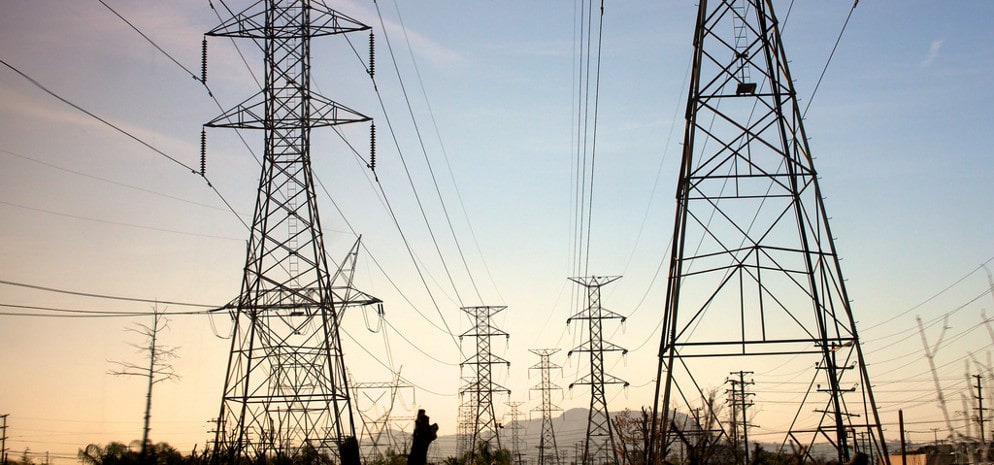The threats that increasing levels of wind and solar represent to the operation of power grids are oft overstated, particularly by those with a stake in rival industries. But while the latest assessment by the non-profit authority that oversees the North American bulk power system says that U.S. and Canadian electricity sector can chart a course to maintain reliability as resources change rapidly, there is still work to be done to optimize this.
Last Thursday, the North American Electricity Reliability Council (NERC) issued its 2017 Long-Term Reliability Assessment (LTRA) which takes a look at the reliability implications of increased levels of wind, solar and natural gas replacing coal and nuclear power on North American grids.
Like the U.S. Department of Energy grid study before it, LTRA documents the large volumes of coal-fired generation that have gone offline over the last 15 years, as well as noting that 14 nuclear units totaling 10.5 GW are scheduled to retire, while at the same time natural gas capacity has increased by over 160 GW in the last eight years alone.
However, NERC says that this and the addition of large amounts of wind and solar are ultimately manageable. “With appropriate insight, careful planning, and continued support, the electricity sector will continue to navigate the associated challenges in a manner that maintains reliability and resilience,” notes NERC.
Work needed to integrate solar
In terms of the areas that NERC has identified for further work on wind and solar, it broadly falls into three areas. First, the authority notes that methods for determining how much solar and wind will be available during moments of peak demand are improving, due to a larger track record of the performance of such plants.
Additionally, NERC appears to acknowledge that wind and solar can supply some of the reliability services required of conventional generators. Large solar PV plants with advanced inverter technology have shown that they can supply reactive power to stabilize voltage as early as 2014.
Additionally, a recent white paper by California’s grid operator, First Solar and National Renewable Energy Laboratories documented how PV plants with smart inverter technology can provide grid services including frequency controls and rapid downward ramping.
NERC recognizes that solar can supply such reliability services, but says that policy needs to catch up. “Various technologies can contribute to essential reliability services, including variable energy resources; however, policies and market mechanisms need to reflect these requirements to ensure these services are maintained,” reads the paper. “Regional transmission organizations, independent system operators, and FERC have taken steps in this direction, and these positive steps must continue.”
Visibility into distributed solar
NERC continues to express concern about the growth of “behind-the-meter” solar, noting that such generation is typically not visible to system operators. The authority calls upon system operators and planners to gather additional data about the aggregate technical specifications of distributed PV to ensure accurate system planning models, and awareness of what is happening on the grid at any given time.
For several years utility representatives have been expressing similar concerns to pv magazine, however NERC did not mention the situations where distributed solar has actually improved utility visibility into the distribution grid. In Hawaii Enphase has worked with local utilities to provide more information into conditions on the a number of feeders, which allowed the utility to approve more PV systems under its net metering program.
Supporting the NOPR?
An area of potentially greater concern in LTRA is apparent support for the Notice of Proposed Rulemaking (NOPR) before FERC to bail out uncompetitive coal and nuclear power plants. Despite a lack of onsite fuel being a factor in a statistically insignificant number of blackouts, NERC has still stated that “fuel assurance methods offer important reliability benefits”.
It is important to note that in this case NERC is expressing concern mostly about the higher portion of gas-fired generation on the grid, not more renewables, noting that any need for such measures is mostly in areas with high levels of natural gas.
And like other reports on this subject LTRA also emphasizes the need to move to a more flexible grid, which would mean more retirements of aging and inflexible coal and nuclear plants, not fewer.
This content is protected by copyright and may not be reused. If you want to cooperate with us and would like to reuse some of our content, please contact: editors@pv-magazine.com.









By submitting this form you agree to pv magazine using your data for the purposes of publishing your comment.
Your personal data will only be disclosed or otherwise transmitted to third parties for the purposes of spam filtering or if this is necessary for technical maintenance of the website. Any other transfer to third parties will not take place unless this is justified on the basis of applicable data protection regulations or if pv magazine is legally obliged to do so.
You may revoke this consent at any time with effect for the future, in which case your personal data will be deleted immediately. Otherwise, your data will be deleted if pv magazine has processed your request or the purpose of data storage is fulfilled.
Further information on data privacy can be found in our Data Protection Policy.